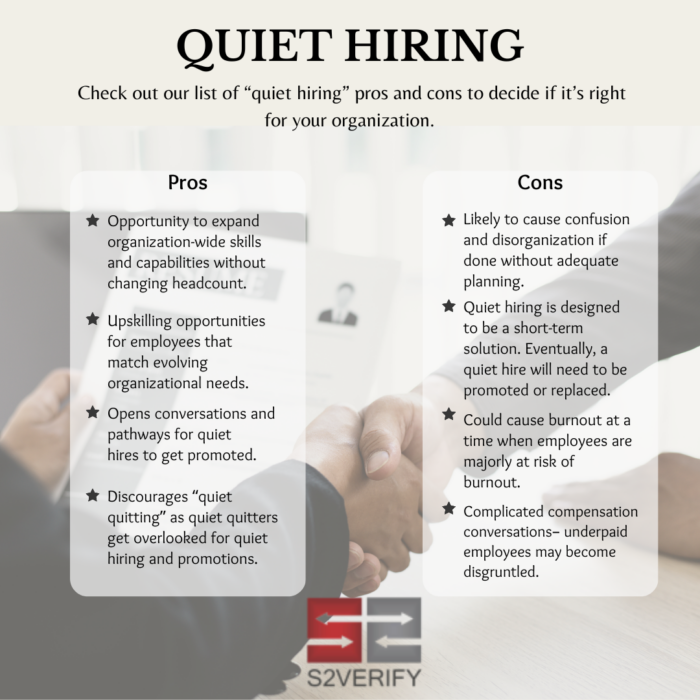The Pros and Cons of the Newest Trend In Employment: Quiet Hiring
Find out why “quiet hiring”–unlike “quiet firing” and “quiet quitting”–might actually be a good thing for employees and employers alike.
Do you remember the “quiet quitting” trend from 2022?
The term refers to when employees do the bare minimum of their job and put in no more time, effort, or enthusiasm than absolutely necessary. “Quiet quitting” hysteria swept across news headlines throughout the year, and researchers even started collecting data on the phenomenon to prove its credibility.
Well, in 2023, we’re welcoming “quiet hiring”, a new workforce trend the experts at Gartner predict will become common HR practice this year–largely in response to 2022’s “quiet quitting” uptick and the ongoing shortage of talent.
“When employees quit, organizations keep people but lose skills and capabilities,” says Gartner’s Sr. Director of Research, Emily Rose Mcrae. “In 2023, savvy HR leaders will turn this practice on its head with ‘quiet hiring’ in order to acquire new skills and capabilities without adding new full-time employees.”
While, for some organizations, this might mean bringing on more short-term contractors, for most, it will mean giving current employees more responsibilities beyond their current job description. Some examples include moving to other positions or taking on different projects internally.
Quiet Hiring: Risks and Rewards
Expanding the skills and capabilities of your workforce without increasing headcount? That’s a dream come true for HR professionals and businesses everywhere. But, some worry that “quiet hiring” may amplify some dangerous trends that many are trying to solve–such as burnout and turnover.
Before you build a quiet hiring program at your organization, check out our list of pros and cons below to decide if it’s right for your organization.

In sum, the cons total up to one thing: potential turnover during a time when the cost of turnover is higher than ever before (due to the ongoing talent shortage). Despite that threat, however, the pros just might outweigh the cons of the ways that “quiet hiring” opens up numerous opportunities for employees and employers alike.
Mutually Beneficial
For employers, quiet hiring saves massive amounts of time and money (i.e. on a long, expensive recruiting process). Current employees step into a new role with valuable institutional knowledge–shortening their time to productivity. Plus, keeping everything in-house is a great way to reduce risk.
The quiet hiring process first looks to internal candidates for job openings. “By looking to those who take on added responsibilities and duties first, it gives employees a path to recognition,” said Kelly Main at Inc.. “In other words, it gives employees more power over their career, which helps them become more valuable and make more money.” In a labor market that is becoming increasingly employee-friendly, quiet hiring has the potential to be another step in the right direction–if done right.







